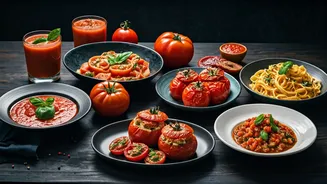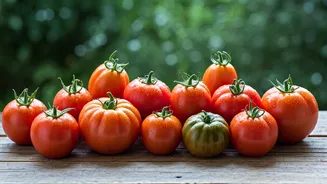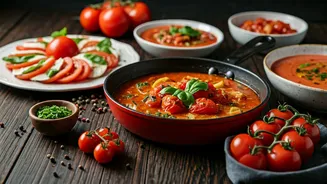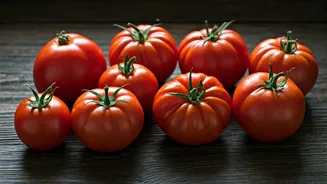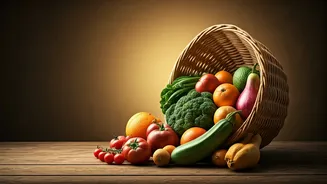Italian Pasta Perfection
Italian cuisine has a well-deserved reputation for its pasta dishes. A classic, simple tomato sauce is often the star. It usually consists of ripe tomatoes,
garlic, olive oil, basil, and a touch of salt. The tomatoes are simmered, allowing their natural sweetness to develop, creating a sauce that beautifully coats the pasta. Another popular choice involves a more robust sauce with vegetables, meat and herbs. These sauces are often simmered for hours, creating a rich depth of flavor that is truly irresistible. Each bite delivers a perfect balance of acidity and sweetness, making it a beloved comfort food for many.
Spanish Gazpacho’s Refreshment
Gazpacho, a cold soup from Spain, provides a refreshing escape from the summer heat. Unlike many soups, it's not cooked; it's a blend of raw ingredients. Typically, the recipe includes tomatoes, cucumbers, bell peppers, onions, garlic, and stale bread, blended until smooth and chilled. This soup offers a vibrant explosion of flavors and textures, with the tomatoes providing a base of acidity and sweetness. Each sip is a burst of freshness, offering a delightful combination of flavors that keeps people coming back for more. It's a perfect example of how simple ingredients can create an amazing culinary experience.
Indian Tomato Curry
Indian cuisine showcases tomato's adaptability in flavorful curries. A basic tomato curry often involves tomatoes, onions, ginger, garlic, and a medley of spices like turmeric, cumin, coriander, and chili powder. These are simmered to create a thick and aromatic sauce. Depending on the region and recipe, vegetables, lentils, or meat can be added. Tomatoes add a balanced acidity and sweetness, melding with the spices to deliver a complex and satisfying taste. The slow cooking process allows the flavors to meld, creating a dish that is both comforting and packed with layers of taste. This curry is often enjoyed with rice or roti, making it a complete meal.
Mexican Salsa’s Zing
Mexican salsa is a cornerstone of Mexican cuisine, celebrating the tomato's vibrant flavors. Salsa can take many forms, but the core ingredients are generally tomatoes, onions, cilantro, chili peppers, and lime juice. These ingredients are combined to create a fresh and zesty flavor. This sauce is typically enjoyed with tortillas, tacos, or as a condiment. The various levels of heat, ranging from mild to fiery, add another dimension to the dish, making each bite an adventure. It is a fantastic demonstration of how fresh ingredients combined create a vibrant and delicious outcome.
French Ratatouille's Harmony
Ratatouille, a classic French vegetable stew, shows tomatoes' harmony with other vegetables. It features tomatoes, eggplant, zucchini, bell peppers, onions, and garlic, simmered in olive oil. The vegetables are cooked separately to achieve a slight caramelization before being combined. The tomatoes contribute their acidity and sweetness, melding all the other components together. The end result is a colorful medley that's rich in flavor and satisfying. Ratatouille is often served as a side dish, but it can also be a hearty vegetarian meal on its own. It's a testament to the fact that simple ingredients, when prepared with care, can create a culinary masterpiece.
Turkish Menemen’s Simplicity
Menemen, a Turkish breakfast or brunch dish, showcases the simplicity of tomatoes. It combines tomatoes, onions, bell peppers, and eggs, gently cooked in olive oil. The tomatoes are the base of the dish, providing sweetness, acidity, and moisture to cook the eggs. Often, spices like cumin and black pepper are added. The result is a hearty and satisfying meal, perfect for any time of the day. The simplicity of menemen makes it a quick and easy option, while the depth of flavor keeps people coming back for more. It's a versatile dish that can be easily adapted to include different vegetables or spices.
Moroccan Tagine's Complexity
Moroccan tagines display tomatoes' role in rich, complex stews. These slow-cooked dishes typically combine tomatoes with meat (like lamb or chicken), vegetables, spices like cumin, ginger, saffron, and often dried fruits or nuts. The tomatoes help create a luscious sauce, absorbing all the flavors. The slow cooking process tenderizes the meat and vegetables, allowing the flavors to meld beautifully. The tagine is often served with couscous or bread, providing the perfect base for the flavorful sauce. It's an example of how tomatoes can play a key role in creating deep and complex flavors that are characteristic of Moroccan cuisine.
American Ketchup’s Presence
Ketchup, an iconic American condiment, uses tomatoes' sweetness and tang to complement a variety of dishes. Made from tomatoes, vinegar, sugar, and spices, ketchup’s blend is a balance of sweet, sour, and savory. It's used on many foods, like fries, burgers, and hot dogs, adding a flavor boost. Its widespread availability and simple use make it a staple in homes and restaurants worldwide. Ketchup demonstrates the broad appeal of tomatoes in dishes, making it one of the most recognizable condiments in the world.
Brazilian Moqueca's Flavors
Moqueca, a Brazilian seafood stew, highlights the tomato's role in creating a vibrant dish. Moqueca uses tomatoes, onions, bell peppers, and coconut milk as a base. Seafood, often fish or shrimp, is added, along with cilantro and other herbs. Tomatoes help create a flavorful sauce. It often includes dendê oil, which adds a unique color and flavor. The stew is slow-cooked, creating a rich and aromatic experience. The combination of seafood, vegetables, coconut milk, and tomatoes results in a dish that showcases the fresh, bold flavors of Brazil. Served with rice, it is a meal with the ability to transport you to the vibrant coastal regions of Brazil.
Vietnamese Pho's Essence
Pho, a Vietnamese noodle soup, makes subtle use of tomatoes to add a touch of sweetness and acidity. Though not a main ingredient, tomatoes might be found within the broth. The broth is usually made with beef or chicken bones, along with a blend of spices. Pho often includes rice noodles, herbs, and meat. The tomato's contribution is a delicate balance of the flavors of the dish. While not a primary ingredient, it provides a crucial layer of flavor. Pho demonstrates how tomatoes can support other flavors, contributing to the depth of a complex dish.
